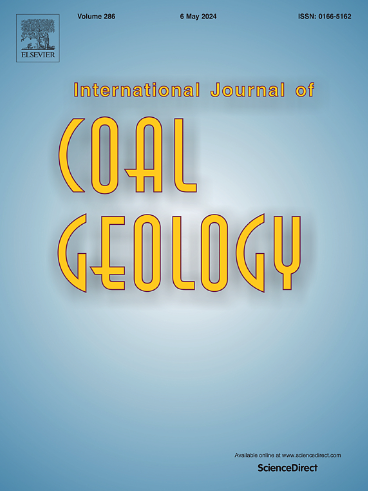CO2 sorption induced mechanical response of Beetaloo shale
IF 5.7
2区 工程技术
Q2 ENERGY & FUELS
引用次数: 0
Abstract
Understanding the mechanical response of organic-rich shales to CO2 adsorption is critical for optimising CO2 sequestration and enhanced gas recovery operations. However, these responses are often highly complex and demand a thorough understanding of the underlying sorptive poromechanical mechanisms involved. This study examines the sorptive poromechanical response of Beetaloo shale to CO2 adsorption under varying confining stress and pore pressure conditions, with a focus on quantifying strength reduction mechanisms. Through controlled triaxial compression experiments, the effects of CO2 exposure on shale strength with varying pore pressures under different confining stresses were analysed. A theoretical model was then developed and experimentally validated to predict the peak strength of shale with CO2 adsorption integrating triaxial response with Langmuir adsorption mechanics. The experimental results showed a strong linear relationship between confining stress and both peak strength and elastic modulus, within the range of confining stress tested (up to 25 MPa). It was also revealed that while variations in adsorption across different confining stress levels were relatively small for low gas pressures, this difference became more pronounced at higher pore pressures. In addition, it was observed that the shale strength reduction due to gas adsorption under lower confining stresses follows a near-linear trend with increasing gas saturation. However, under higher confinement (e.g., 25 MPa), the relationship becomes nonlinear, with a more pronounced drop in strength occurring at the early stages of gas adsorption. Moreover, the developed model aligned well with experimental data across all tested conditions, offering a practical tool for predicting mechanical alterations in CO2 saturated formations. The findings of this study enhance our understanding of coupled poromechanical-sorption effects in shale rocks and provide critical insights for optimising CO2 injection strategies, ensuring formation integrity, and improving long-term sequestration security in shale carbon sequestration.
二氧化碳吸附诱导的Beetaloo页岩力学响应
了解富有机质页岩对二氧化碳吸附的力学响应对于优化二氧化碳封存和提高天然气采收率至关重要。然而,这些反应通常非常复杂,需要对所涉及的潜在吸附孔隙力学机制有透彻的了解。本研究考察了不同围应力和孔隙压力条件下Beetaloo页岩对CO2吸附的孔隙力学响应,重点研究了强度降低机制。通过可控三轴压缩实验,分析了不同围应力下不同孔隙压力下CO2暴露对页岩强度的影响。建立了基于Langmuir吸附力学和三轴响应的页岩峰值强度预测理论模型,并进行了实验验证。试验结果表明,在测试围应力范围内(最大为25 MPa),围应力与峰值强度和弹性模量均呈较强的线性关系。研究还表明,在低气压下,不同围压水平下的吸附变化相对较小,但在高孔隙压力下,这种差异变得更加明显。此外,在低围应力条件下,随着含气饱和度的增加,气体吸附对页岩强度的降低呈近线性趋势。然而,在更高的约束条件下(例如,25 MPa),这种关系变成非线性的,在气体吸附的早期阶段强度下降更为明显。此外,开发的模型与所有测试条件下的实验数据吻合良好,为预测二氧化碳饱和地层的力学变化提供了实用工具。该研究结果增强了我们对页岩孔隙力学-吸附耦合效应的理解,并为优化二氧化碳注入策略、确保地层完整性和提高页岩碳封存的长期封存安全性提供了重要见解。
本文章由计算机程序翻译,如有差异,请以英文原文为准。
求助全文
约1分钟内获得全文
求助全文
来源期刊

International Journal of Coal Geology
工程技术-地球科学综合
CiteScore
11.00
自引率
14.30%
发文量
145
审稿时长
38 days
期刊介绍:
The International Journal of Coal Geology deals with fundamental and applied aspects of the geology and petrology of coal, oil/gas source rocks and shale gas resources. The journal aims to advance the exploration, exploitation and utilization of these resources, and to stimulate environmental awareness as well as advancement of engineering for effective resource management.
 求助内容:
求助内容: 应助结果提醒方式:
应助结果提醒方式:


